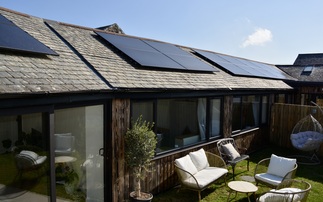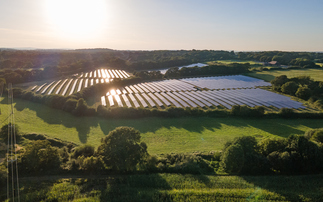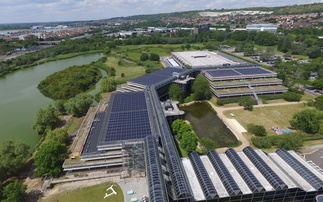Solar Decathlon aims to revive inefficient buildings with innovative solar retrofits
Entrants in a European sustainability competition are hoping to revitalise old, inefficient buildings with new solar retrofits. Ideas at the European Solar Decathlon include putting solar skins around terraced houses and turning the roofs of abandoned building into greenhouses.
Build it up, build out, but don't tear it down, is the approach taken by several teams from across Europe, who submitted proposals for new housing technologies to make low-cost, largely self-sustainable living units. They take advantage of existing building structures to create new living space and photovoltaic power generation opportunities.
The Dutch team, from the University of Delft, have built a prototype solar skin designed to fit over an existing terraced house, of which it estimates there are 1.4 million in Holland. It provides photovoltaic cells to harvest energy, while using insulation to retain heat during the winter (outside gardens can only be used half the time due to the Dutch climate).
The skin creates an extra indoors garden area that can be used for food production, says the project team, while also creating a ventilation system using a combination of an under-floor crawlspace and a retrofitted chimney.
The project could be applied to whole neighbourhoods, says the Delft team, which would create an opportunity to reconfigure streets to be pedestrian, creating walkable neighbourhoods.
A team from Frankfurt, Germany created the ‘Symbiont', an addition to the top of existing builds, which provides a new floor of living space along with solar panels to generate more power. The rationale for that project is that the city's neighbourhoods are too built up to enable any more development at street level.
Teams from the universities of Alcala and La Mancha, Spain, designed the SymbCity house, a rooftop dwelling that includes solar collectors, and a greenhouse space that can be opened and closed according to the climate. And other teams from Berlin and Taiwan also proposed living areas that could be built atop existing buildings.
The Danish entry also includes a skin, but unlike the others, this is part of a specially constructed dwelling designed to accommodate two people. A small living space is surrounded by a ‘thermal envelope'. This in turn is surrounded by a weather shield with solar collectors, designed to create a mixed indoor/outdoor environment within the living space.
The Solar Decathlon competition is based on a US project, initiated in 2002 by the Department of Energy there. The Europe version takes place every two years, and was hosted in Madrid during 2010 and 2012.
This year, the pavilion showing the different prototype housing structures is in Versailles, just outside Paris. Some 20 teams have competing entries in areas ranging from housing technology to urban innovation, and tackling social issues. The exhibition opens on Saturday, and ends in the middle of July.







